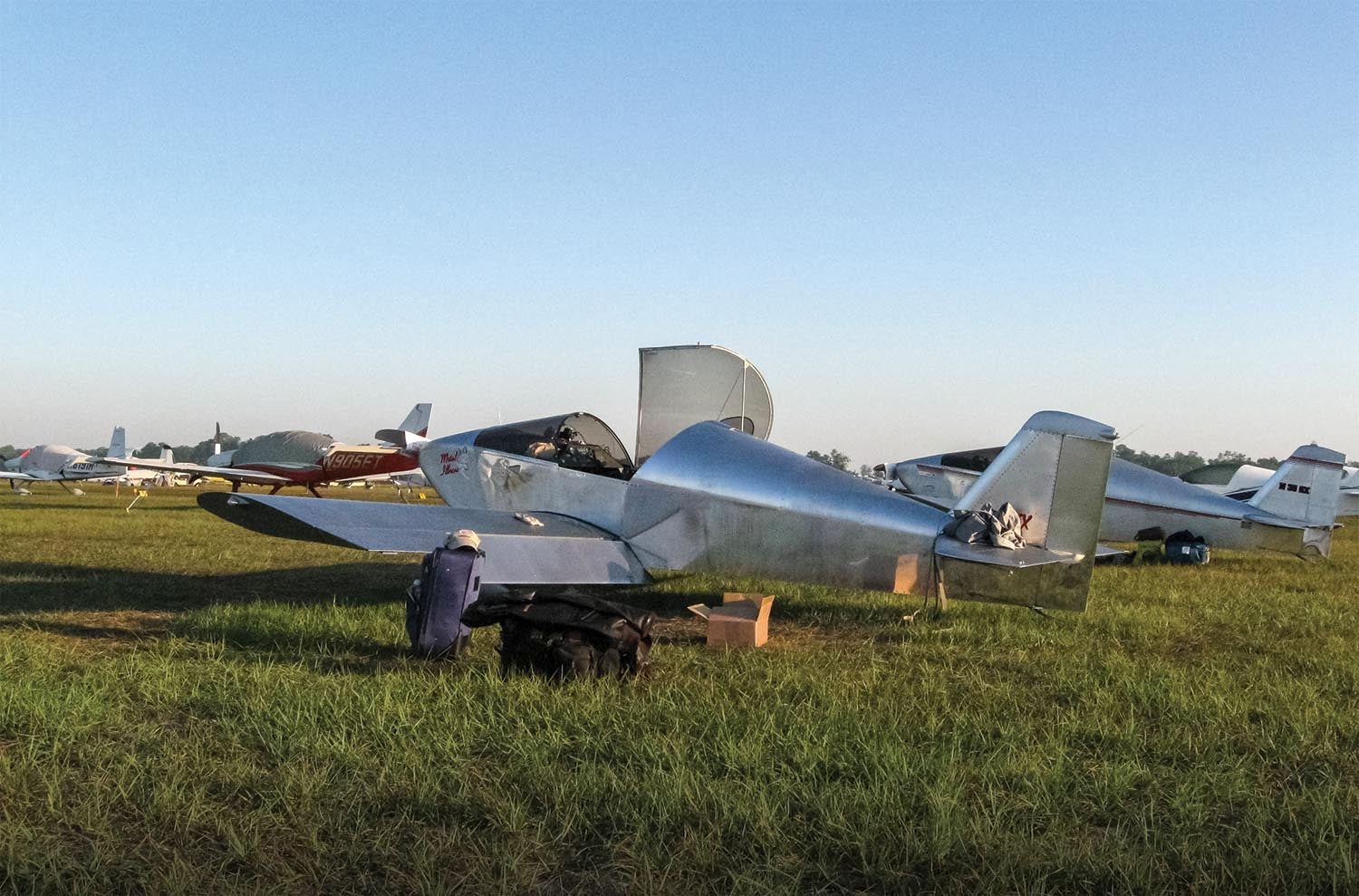
An audible sigh and an acceptable landing punctuated the end of a stuttering cross-country. It punctuated it on a Wednesday, however, not the previous Sunday as planned. Executing a VFR cross-country that spans days and thousands of miles and is undertaken to attend a specific event—in this case, Sun ’n Fun—can be an adventure. A plan can quickly give way to hope. My plan had me arriving home Sunday. But that’s not what happened.
When weather cooperates, Florida’s Lakeland-Linder Airport is a day’s flight from Oshkosh in Metal Illness. I’ve proven that three times. Flying to and from Sun ’n Fun, however, presents a particular concern for nearly every VFR pilot (and many IFR pilots). It’s a scheduled event and the only way in and out of the middle of the Florida peninsula can be blocked by April’s uneasy weather. One of my friends left Sun ’n Fun early one year to beat bad weather between there and his home in North Carolina. But that’s not what happened. He got stuck for days near Ocala, Florida, 89 miles north of Lakeland. The ever-compassionate Sonex entourage, having driven to Lakeland, memorialized his plight with new lyrics to James Taylor’s “Carolina in My Mind.”
In his mind, he’s going to ’Carolina
Might not be on Monday
Might not be on Tuesday
Might not be on Wednesday
But he’s going to ’Carolina in his mind.
In time, I’d pay the price for singing along.
A few years later it was my turn to leave Sun ’n Fun early to get in front of a weather system. The need to bug out presented an opportunity to fly to North Carolina off the wing of another friend and his Sonex. Our plan, finalized the night before we decided it was time to leave, was to launch as a flight of two and stop for fuel about two hours later. But that’s not what happened. During preflight I forgot to drain a week’s worth of Florida condensation from my fuel tank. While my friend taxied for departure, I frantically exited my cockpit to stop him and to find a jump start for my depleted battery. It was an inglorious beginning for the flight home. Surely things would improve. But that’s not what happened. On climb-out I realized I hadn’t refueled after arrival, which forced an in-flight change to our planned fuel stop. Our destination, Siler City, North Carolina, was now two fuel stops away, not one.
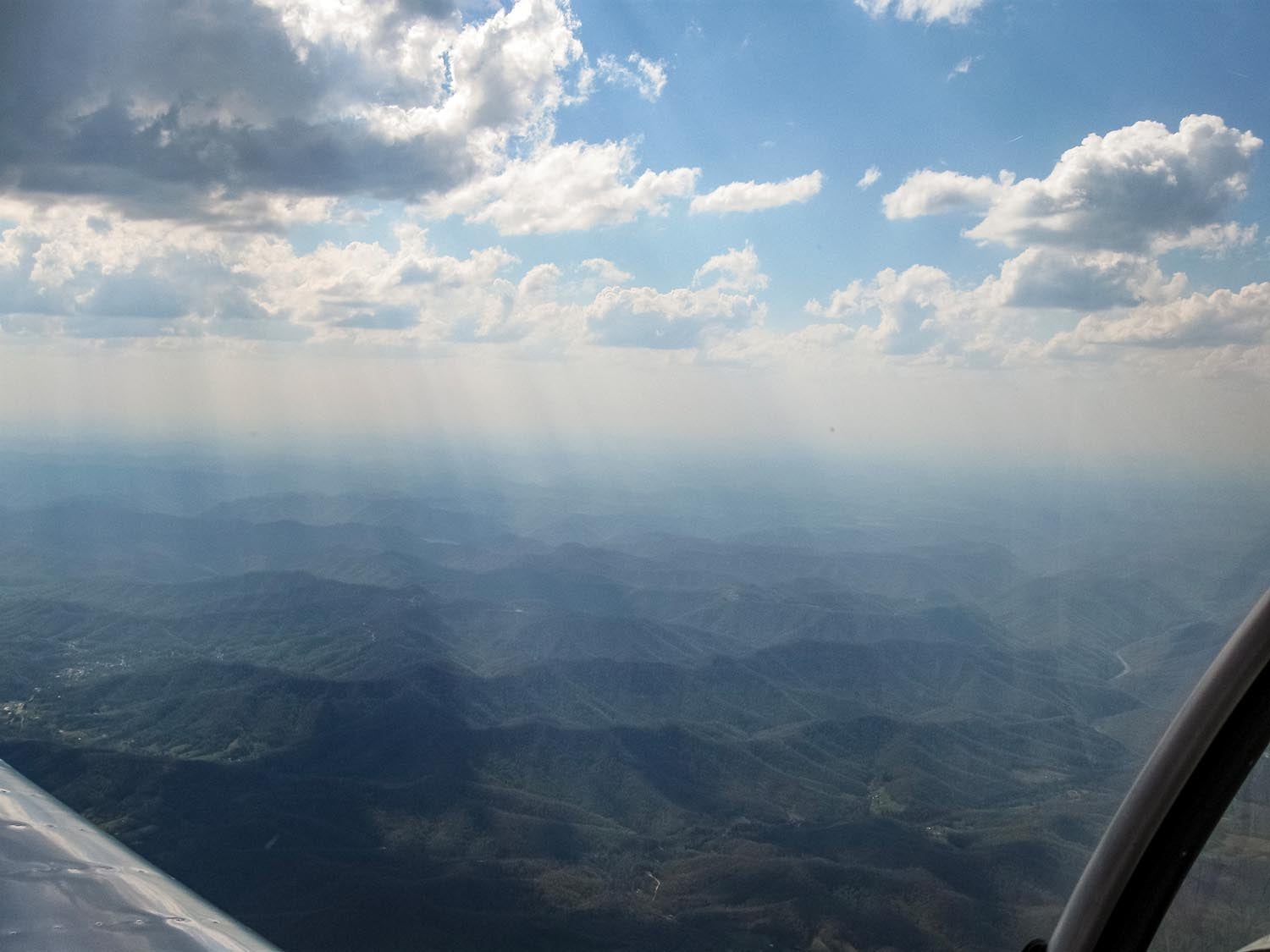
Hangar Flying’s Valuable Lessons
The morning I departed Siler City for Adrian, my day’s destination in southeastern Michigan, I had a clear route over the Appalachian Mountains. I was again flying to beat bad weather. The flight began well but went south, figuratively speaking, quickly. An hour into my planned 2.5-hour flight my comfort and concentration deteriorated from an urgent need to—I’ll be delicate—find a tree. Millions of them teased me from 6000 feet below, from the hills and hollers and ridges and ravines of the Appalachians. Airports, however, were few, out of the way and beyond my biological range. I pinned my survival on the timeworn game of ignoring the urge until it went away. But that’s not what happened. Because that never happens. What follows underscores the importance of staying current on hangar flying.
Between alternating bouts of discomfort and denial I remembered a story a pilot friend shared about a large plastic bag and a T-shirt. By luck, I had both. If I could reach them. I loosened my four-point harness to fish for a new T-shirt secreted away in my luggage. It wasn’t the shirt I wanted. It was the two-quart, sealable bag it was in. If I could reach that, I knew I could reach an old T-shirt packed in a bag of dirty laundry. I’d like to say my search went well, but that’s not what happened. Turbulence bounced me into the canopy and bits of headset rained down on my lap. Still, I found the items I needed to MacGyver a restroom. The plastic bag and the old T-shirt gave their all over the mountains before settling onto the passenger floor to await the next landing, which I executed with great care and a mild headache.
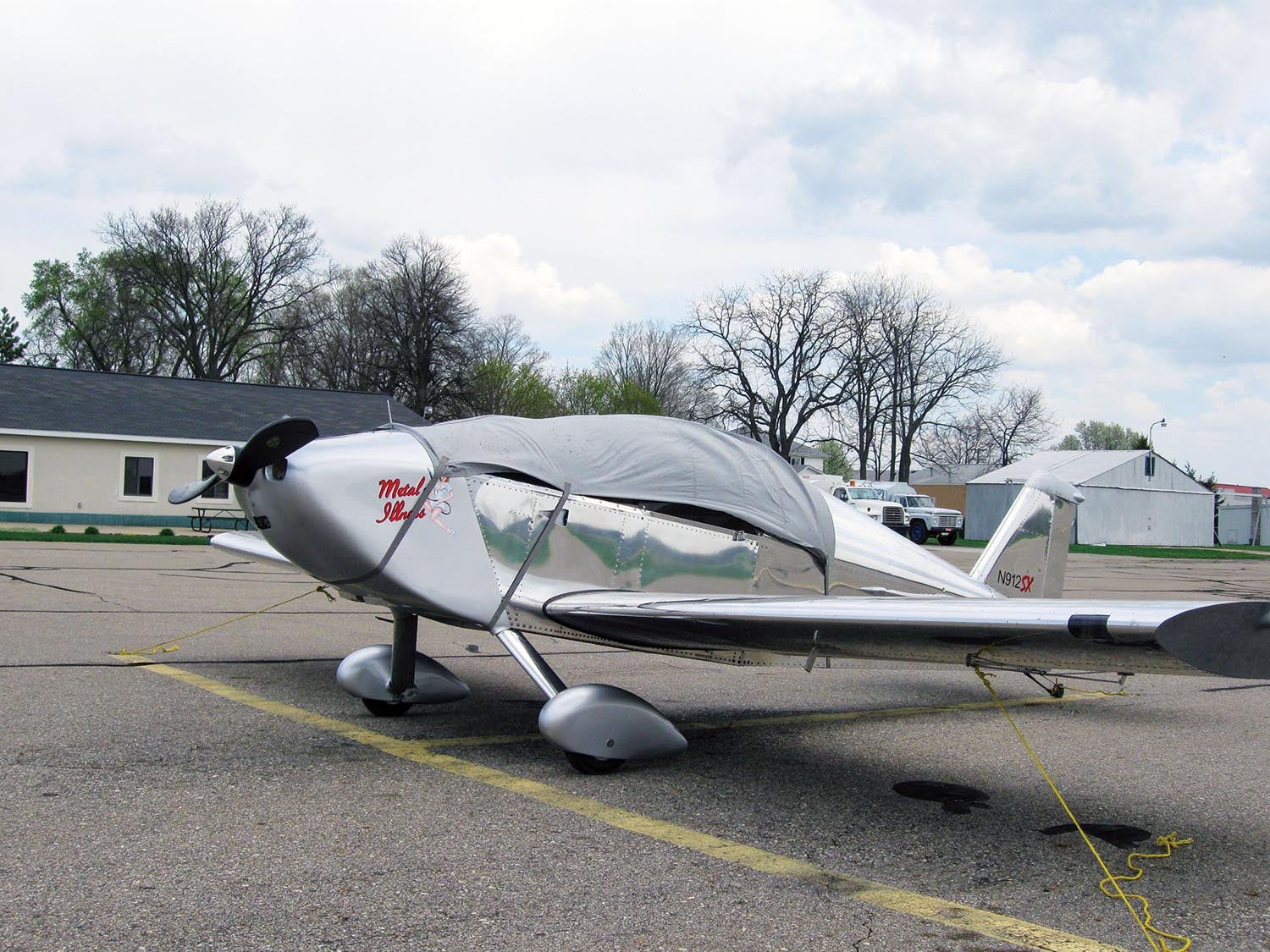
Adrian and Bust
I landed in Adrian ahead of an approaching storm and spent the night with friends, waiting for the front to pass. Come morning, rain and an unyielding wind scoured Michigan’s leafless April landscape while Oshkosh was soothed by sunshine. The wind buffeted Metal Illness broadside, testing the tie-downs and canopy cover. The “I have a better idea” tailwheel pushrod I installed on my airplane bent trying to resist the wind’s loads. I implemented an easy repair, but not until the wind calmed enough for me to pull the airplane to the FBO’s vacant hangar. There’d be no flying that day. Conditions were promised to improve the next day. But that’s not what happened.
Dawn was shrouded in mist, but an encouraging weather forecast and VFR ceiling caused me to launch into the gray fuzz. As I turned on course I looked down at the runway I had just departed. It invited me back. I was on downwind. If I’d had sense, I’d have put Metal Illness back on the ground. But at that moment I was struck by something I swore I’d never fall victim to: get-there-itis. I didn’t want to impose on my friends again. I imagined my coworkers in Oshkosh, under a perfect blue sky, thinking I was on an epic boondoggle. I glanced once more at the runway and told myself the weather, as forecast, would improve. But that’s not what happened.
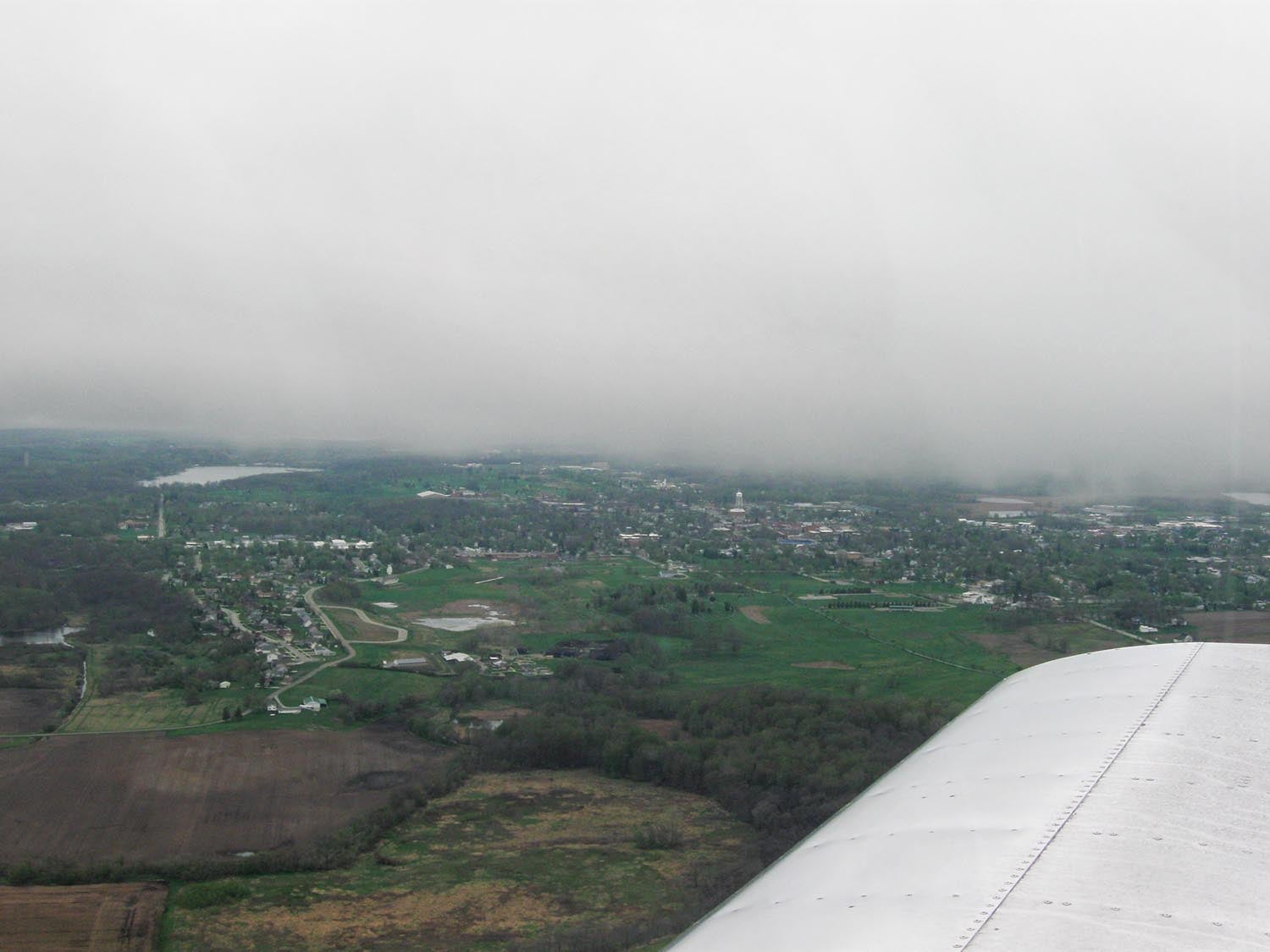
Wallowing to Warsaw
The gray fuzz thickened around my canopy like a cataract. An indeterminable ceiling pushed me lower. I was outpacing the visibility and outpacing my racing thoughts. I reduced airspeed but my thoughts still lagged behind what my eyes could process. I watched for towers, both outside and on the GPS, while searching for airports and AWOS frequencies. I was flying lower and slower. Steadily lower and slower. I would have never launched into scud, yet I failed to stay out of it. I was nearly out of throttle and almost too low to place my attention anywhere but outside when a spear of sunlight spotlighted a portion of Warsaw, Indiana’s, airport. Relief overrode my anxiety. “If I can keep the airport in sight and keep the wreckage inside the airport fence,” I thought, “I’ll count the landing a success.”
It never felt better to be on the ground drinking burned FBO coffee, reading old issues of Aviation Safety magazine and watching daytime television. I occupied a tattered recliner that had swaddled many a stranded aviator. I had been told I could stay in the FBO for the night, but that’s not what happened. A janitor kicked me out in the evening. Dawn delivered little light and little hope. The morning wouldn’t give up its heavy, gray blanket. I felt myself growing impatient. I still had a touch of get-there-itis. If AWOS had said it was clear, I was ready to believe it against what my eyes told me was true. It took hours of staring at weather forecasts for the ceiling to lift. While waiting, I plotted an alternate course north, up Lake Michigan’s east shore and over Michigan’s Upper Peninsula, where better conditions were forecast. The route wasn’t a short flight, but it was a flight. I launched north.
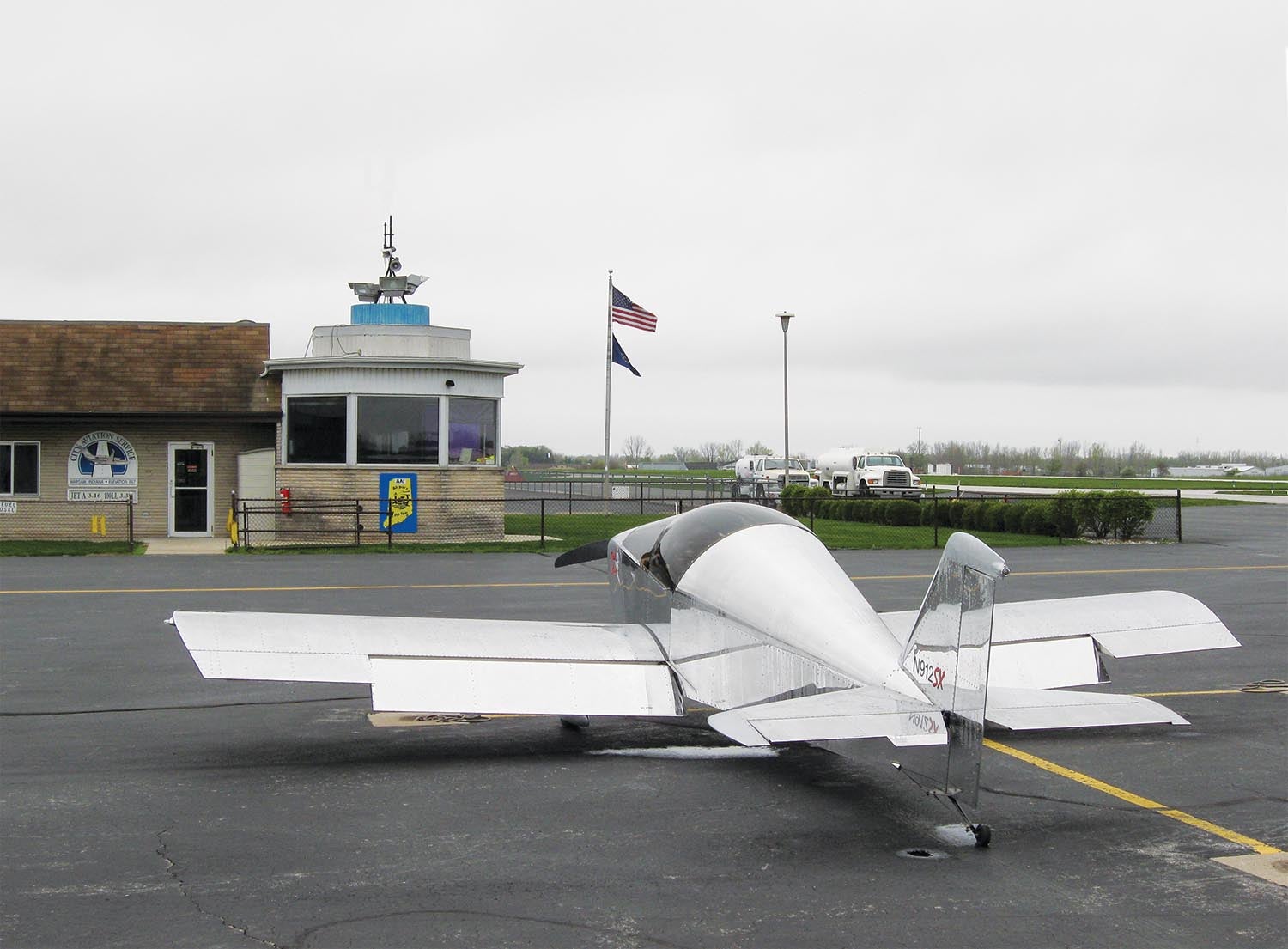
Five Days. Four Errors
All told, it took five days to get home. I could blame the adventurous flight on poor weather, mechanical issues and deadlines. But each shortcoming was set in motion by something I did or did not do. I failed to get fuel and sump the fuel tank before departing Sun ’n Fun. I installed the non-standard tailwheel steering link that bent in the wind. I launched into bad weather and failed to land immediately after recognizing the forecast and the facts didn’t agree. I own all of that. What I can’t explain is the biologically necessitated incident over the Appalachian Mountains. I followed my preflight checklist that morning, the last item being…well, you know.
And that’s what happened.







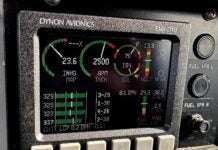






Appreciate this honest story and self reflection.
I have come to realize that light aircraft travel is akin to sailing, the arrival decided not by the hands on the wheel but by the hands of the weather, with patience, a flexible schedule and enjoyment in visiting unanticipated destinations a virtue.
If you have time to spare, go by air, ….sometimes
Thank you for reading my column and taking the time to comment. There are very few Air Medals won in my flying stories. Flying a cross country is akin to traveling by motorcycle. The focus should be on the journey, not the destination.
I agree with the motorcycle analogy, multi-day rides and X23(FL) to KOSH VFR have been remarkably similar for me! As long as you take pictures and share with others!
METAL ILLNESS, what a name! It describes the name each one of us would like to have painted on our Sonex. Since I started building balsa gliders at 8 or 9 and would pedaled my bicycle on a golf course while looking backwards to the glider towing behind and missing the tree in front of me….
Hi Henry,
Thank you for reading my column! The name Metal Illness came to me while polishing parts of my airplane I knew no one would ever see. I’ve since seen a homebuilt P-51 with the name, but I claimed it first.
I love the image of you riding your bike with a balsa airplane in tow!
Epic. Truly epic. Having spent many hours low and slow and having seen the proliferation of uncharted cell phone towers uncomfortably close, I was riding right along with you.
Hi Alex,
Thank you for reading my column and commenting. Scud running is no fun and I was fool to get myself in that situation. Low-level flight is dangerous enough even in the best conditions. I’m glad I’m still here to write about it and you’re still here to read about it.
But that’s not what happened….
Every aviator’s experience. I laughed harder and harder every time you said it.
Hi Brian,
Thank you for reading and commenting, I’m glad you enjoyed my column. “But That’s Not What Happened” was my working title for that column. 🙂
Thanks for the story. You eloquently shared what many of your readers could also personally relate. If only we had both the courage to confess and the skill to write about our own experiences. I’m guessing your version of “There I was..” invoked “Well some of that happened to me as well.” And maybe other episodes like you wrote about too. Thanks again!
Hi John,
Thank you for reading my column and taking the time to comment. Aviation is full of large egos and braggadocio, I try to offset that by relating my experiences as honestly as possible. But there was that one time I….
I’ve had this experience too. A 6-7 day trip from Ohio to Cape Cod and back (but that’s not what happened) turned into 11 days, with a delayed departure, an extra two overnights, and two unanticipated stops. Was never so happy to be on the ground at my home airport!
Hi Douglas,
Thank you for reading my column and commenting. After I landed back home, I washed the Sun and Fun dirt off my airplane (that stuff is so tenacious it survived the rain storms on my flight home) and didn’t touch it again for another month. What’s the phrase? “Too much of a good thing….”